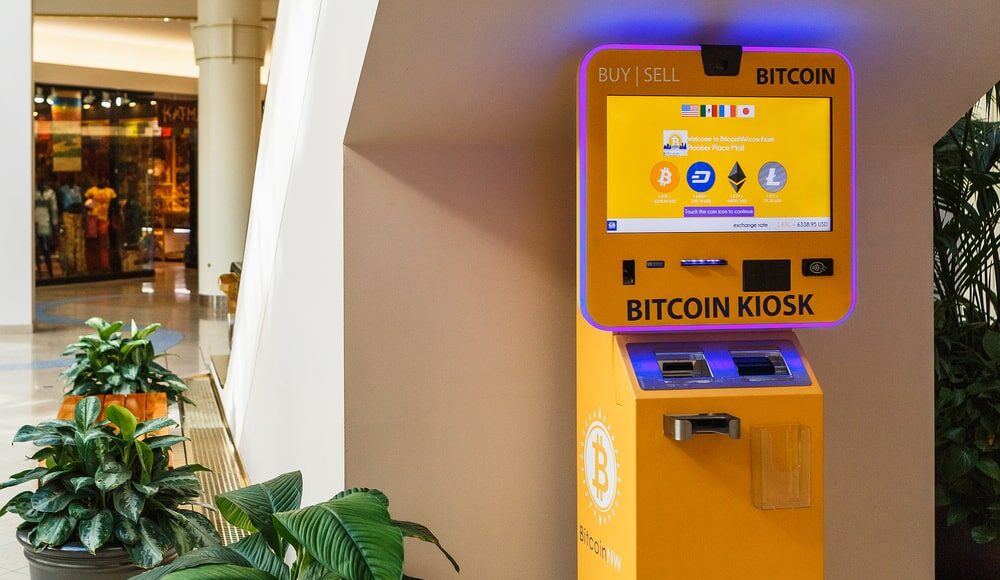Cryptocurrency ATMs, designed as a bridge to the digital asset world, have increasingly become tools for scammers. Exploiting the anonymity and speed of these machines, fraudsters are employing tactics ranging from fake tech support calls to elaborate romantic schemes, leading to significant financial losses for victims. As the crypto market remains volatile and regulatory measures struggle to keep up, consumers must navigate a landscape fraught with risks. With authorities and lawmakers pushing for tighter regulations, the battle against crypto ATM scams highlights the need for enhanced consumer protection and awareness.
The Rise of Cryptocurrency ATM Scams
Cryptocurrency ATMs, which facilitate the exchange of cash for digital assets, have become increasingly popular. However, their rise in use has also made them a target for scammers. Fraudsters use various deceptive tactics to trick victims into depositing large sums of money into these machines. Common scams include fake tech support calls, romantic cons initiated through dating apps, and investment schemes promising high returns. These scams exploit the inherent anonymity and speed of cryptocurrency transactions, making it difficult to track and recover stolen funds.
Regulatory Challenges and Law Enforcement Efforts
The rapid growth of cryptocurrency ATMs has outpaced regulatory frameworks, creating challenges for law enforcement agencies. While some states require ATM operators to register and implement anti-money laundering measures, the effectiveness of these regulations varies. The speed of cryptocurrency transactions and the varying levels of cooperation from exchanges add to the complexity of recovering stolen funds. For instance, while some exchanges like Binance have been cooperative with law enforcement, others pose significant challenges.
Authorities have been working to tighten regulations. In California, lawmakers are striving to balance consumer protection with industry support. Recent legislation requires digital financial asset businesses to obtain a license from the California Department of Financial Protection and Innovation by July 2025. However, critics argue that the measures need further refinement to provide clarity and effectively combat fraud.
The Broader Implications for the Crypto Market
The rise in scams has contributed to the volatility and skepticism surrounding the cryptocurrency market. Despite these challenges, some experts believe in the long-term viability of cryptocurrencies due to their potential for high returns and growing institutional interest. However, the market remains highly speculative and risky for individual investors.
The increase in fraudulent activities has also affected investor confidence and the overall reputation of the cryptocurrency industry. High-profile scams and thefts, such as the $14 billion stolen in 2021, underscore the need for more robust security measures and regulatory oversight.
Practical Steps for Consumers
To protect themselves, consumers should adopt several precautionary measures:
- Verify Legitimacy: Before using a cryptocurrency ATM, verify its legitimacy. Avoid using ATMs that appear tampered with or are located in suspicious areas.
- Be Cautious with QR Codes: QR code scams are also on the rise. Ensure that QR codes have not been tampered with and avoid making payments through QR codes without verifying their authenticity.
- Stay Informed: Keep up with the latest news and updates on cryptocurrency scams and regulations. Awareness is a crucial defense against falling victim to fraud.
>>> Read more: How Easy Is It to Trade Crypto with a Fake ID?
The Path Forward
The battle against cryptocurrency ATM scams is ongoing, with authorities and lawmakers pushing for stronger regulatory frameworks. Enhanced consumer education and awareness are essential to navigate this risky landscape. As the cryptocurrency market evolves, balancing innovation with security will be key to protecting investors and maintaining the integrity of the digital asset ecosystem.
By addressing these regulatory challenges and promoting practical safety measures, the industry can work towards minimizing the impact of scams and fostering a more secure environment for cryptocurrency transactions.
Readers’ frequently asked questions
How can I identify a legitimate cryptocurrency ATM?
To identify a legitimate cryptocurrency ATM, start by checking the machine’s operator and their compliance with regulatory requirements. Legitimate operators must be registered with the U.S. Department of Treasury’s Financial Crimes Enforcement Network (FinCEN) and maintain anti-money laundering programs. Look for machines located in reputable and secure places like banks or well-known retail stores. Avoid ATMs that appear tampered with or are in suspicious locations. Additionally, researching online reviews and checking the operator’s website can provide insights into the machine’s legitimacy.
What should I do if I suspect I’ve been scammed through a cryptocurrency ATM?
If you suspect you’ve been scammed through a cryptocurrency ATM, report the incident immediately to your local law enforcement agency and the cryptocurrency exchange involved. Provide all relevant details, including transaction IDs and any communication with the scammer. Contact your bank or credit card company if you used these methods to fund your transaction. Additionally, you can report the scam to the FBI’s Internet Crime Complaint Center (IC3) and FinCEN. Acting quickly increases the chances of recovering your funds, though it can be challenging due to the nature of cryptocurrency transactions.
How can regulatory measures help prevent cryptocurrency ATM scams?
Regulatory measures can help prevent cryptocurrency ATM scams by enforcing stricter compliance requirements for operators, such as mandatory registration with FinCEN, implementation of anti-money laundering programs, and regular reporting of suspicious activities. Enhanced regulations can also mandate better security protocols and consumer protection measures. Lawmakers can ensure that cryptocurrency exchanges cooperate with law enforcement investigations, making it easier to trace and recover stolen funds. By creating a robust regulatory framework, authorities can reduce the opportunities for scammers to exploit vulnerabilities in the cryptocurrency ATM ecosystem.
What Is In It For You? Action Items You Might Want to Consider
Verify the ATM Operator Before Use
Always check the legitimacy of the cryptocurrency ATM operator. Make sure the operator is registered with the U.S. Department of Treasury’s Financial Crimes Enforcement Network (FinCEN) and complies with anti-money laundering regulations. This can often be verified on the operator’s website or by researching online reviews. Using ATMs from well-known providers in reputable locations can significantly reduce the risk of scams.
Be Cautious with Urgent or Unsolicited Requests
If you receive urgent requests to use a cryptocurrency ATM, whether through a phone call, email, or social media, be highly skeptical. Scammers often create a false sense of urgency to pressure you into quick decisions. Take your time to verify the source of the request and consult with trusted advisors or resources before proceeding with any transaction.
Stay Informed About the Latest Scams and Regulations
Keep yourself updated on the latest scams and regulatory changes in the cryptocurrency space. Regularly reading news from reliable crypto sources and following updates from regulatory bodies can help you stay ahead of potential threats. Understanding the evolving landscape of cryptocurrency regulations and scam tactics will enable you to make informed and safer trading decisions.











[…] >>> Read more: Cryptocurrency ATM Scams On The Rise […]